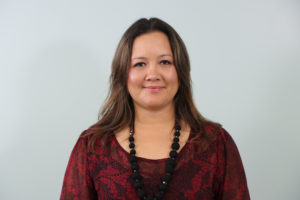 Guest post by Cristina DeJesus, CEO of Green Dot Public Schools
Guest post by Cristina DeJesus, CEO of Green Dot Public Schools
This is the second in a series of insights and reflections from panelists who spoke at NewSchools Summit 2018. The series can also be found on Medium.
It’s really hard to talk about failure, but it’s also a personal credo for me in my work. Owning mistakes is just as critical as sharing wins for the long-term success of public education. When NewSchools approached me about a session on failure at their annual Summit, I knew there was value in sharing my experience. I hoped others would benefit from hearing some of the mistakes and challenges we faced doing our first high school turnaround.
Here is my story of failing forward, and I encourage you to watch the full session to hear the equally important stories told by my fellow panelists Dacia Toll, Co-CEO of Achievement First; Dan Weisberg, CEO of TNTP; and Jean-Claude Brizard, Deputy Director and Senior Advisor in US Programs at the Bill & Melinda Gates Foundation.
Let’s go back to 2008, when the Los Angeles Unified School District Board voted to turn over Locke High School in Watts to Green Dot Public Schools California. Green Dot had successfully created brand new schools, but this was our first high school turnaround. We were excited about the opportunity to reach these students, who too often are assumed to be a lost cause, and are often left behind by failing neighborhood schools. In our minds, this was what Green Dot was made for.
However, we didn’t fully understand what we were getting ourselves into. We went into the work like saviors. We were going to save Locke and turn it around. The reality is, Locke saved us. And we are a completely different organization today because of the work we’ve done with the Locke community. Let me tell you three assumptions we made that have fundamentally affected how we do our work across all of our Green Dot Schools:
1. We had successfully opened schools in other high-need communities, so we thought this one would be the same. But Locke brought a level of intense need we had not faced up until this point, and the level of need has intensified over the last 10 years. For instance, at Locke, on average, 9th grade students arrive reading at the 3rd grade level. Before our work with Locke, we thought we were serving all students, but Locke was the first school to really show us what “all students” means.
2. We thought we could take our knowledge of opening successful new charter schools and apply them directly to the turnaround context. When we walked into Locke, we were used to having the breathing room to create our own culture. But with turnarounds, you walk into schools that already exist in communities and already serve as neighborhood hubs. We were also coming from an ideal world of 400-student waiting lists. Instead, Locke starts the school year at about 2/3 capacity, with 11 new students joining each week throughout the year.
3. We underestimated on every level the social-emotional needs, the degree to which students would be behind, and the effects of neighborhood trauma on our students. We evolved our academic model and shifted our investments network-wide to better address social and emotional learning and student mental health needs.
The lessons we learned from turning around Locke not only made us better at school turnaround, it also made us better at running our independent schools. Today, all our independent high schools are recognized as some of the best in the country, and all nine exceed the state graduation rate for non-socioeconomically disadvantaged students. We have the lessons from Locke, in part, to thank for these results. And, our successes at Locke are undeniable: We have reduced the dropout rate by 40 percent, and Locke’s college-ready graduation rate is now higher than the California state average.
Charter schools were started with the basic premise that the kids weren’t the problem, the system was, and 25 years later we have borne that out — but we challenge the education community to see what more we can do. Our work at Locke High School is proof positive that improving public education is not only possible, but necessary. What has become clear to me through our turnaround efforts at Locke and other schools is that school choice is a healthy part of our public education system, but to truly meet the needs of ALL kids, we have to understand that putting a charter school in every neighborhood isn’t a singular solution.
All students — and I mean ALL — deserve a high-quality public education in their neighborhood. We must continue to talk about our failures, to share our lessons, and to be honest about the kinds of challenges that public education faces. Together, we can improve schools so that all students are served equitably and can grow and thrive — no matter where they live, no matter where they come from.